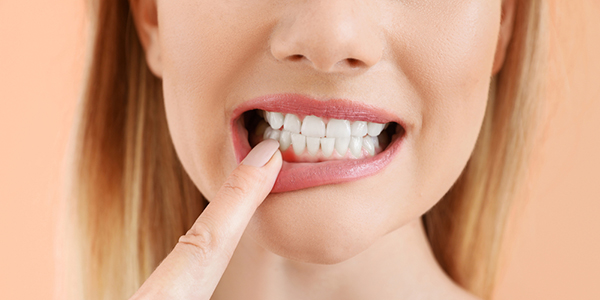Working Time
- Mon-Sat 09:00 – 19:00
Sunday Closed
Contact Info
-
Phone: +90 533 040 7207
Ask the Experts
Periodontitis

Periodontitis is a severe form of gum disease characterized by inflammation of the gums, which can lead to various symptoms such as redness, bleeding, and swelling. If left untreated, periodontitis can progress and ultimately result in tooth loss.
Treatment for periodontitis typically involves a combination of professional dental cleaning and, in more severe cases, surgical intervention. The goal is to remove plaque and tartar buildup from below the gumline and reduce inflammation. Deep dental cleaning procedures, such as scaling and root planing, are commonly performed to remove bacteria and smooth the tooth roots.
In advanced cases of periodontitis, surgical procedures like gum grafting, bone grafting, or flap surgery may be necessary to repair and regenerate damaged gum and bone tissues.
Prevention is key in avoiding periodontitis. Regular and proper brushing and flossing, along with routine dental check-ups and professional cleanings, can help remove plaque and prevent the development of gum disease. Maintaining good oral hygiene practices and addressing any signs of gum inflammation promptly can significantly reduce the risk of periodontitis.
If you notice any symptoms of gum disease, such as redness, bleeding, or swelling, it is important to schedule an appointment with your dentist for a thorough evaluation and appropriate treatment. Early intervention is crucial in managing periodontitis and preserving your oral health.
What are the symptoms of periodontitis?
Healthy gums feel robust to the touch and fit tightly around your teeth. In contrast, periodontitis symptoms include:
- Red or purple gums.
- Swollen gums.
- Gums that bleed freely.
- Tender gums.
- Bad breath.
- Pus (infection) around the gumline.
- The teeth are loose.
- Tooth loss.
- Gum recession (when your gums separate from your teeth).
- Pain during chewing.
- New gaps or spaces between your teeth.
- Changes in how your teeth fit together.
Management and Treatment
Nonsurgical periodontitis treatments
Nonsurgical treatments are often the first line of treatment for mild to moderate periodontitis. These treatments include:
- Antibiotics: Your dentist may prescribe oral antibiotics to help fight the infection and reduce inflammation. Alternatively, they may apply a topical antibiotic directly to the affected area beneath your gums.
- Scaling and root planing: This procedure, also known as a deep dental cleaning, involves removing plaque and tartar from above and below the gumline. It is typically performed using local anesthesia to ensure your comfort. The process includes scaling, which involves removing plaque and tartar from the tooth surfaces, and root planing, which involves smoothing the tooth roots to prevent further plaque buildup. Scaling and root planing may require multiple visits to your dentist or periodontist’s office.
After undergoing scaling and root planing, it is important to schedule a follow-up appointment with your periodontist to assess the effectiveness of the treatment and monitor the health of your gums.
It’s worth noting that nonsurgical treatments may not be sufficient for advanced cases of periodontitis. In such cases, surgical interventions, such as gum surgery or bone grafting, may be necessary to address the disease and restore oral health.
Surgical periodontitis treatments
You are correct. Surgical intervention is often necessary for moderate to severe cases of periodontitis. Here are some surgical treatments that may be recommended:
- Flap surgery: During flap surgery, a periodontist makes an incision along the gum line and lifts the gum tissue to access the tooth roots. This allows for thorough cleaning of the roots and removal of any infected tissue. In some cases, the underlying bone may be reshaped to promote healing and reduce pocket depth.
- Dental bone grafts: If there is significant bone loss due to periodontitis, a bone graft may be performed. This involves placing bone-grafting material in the areas where bone tissue has been lost. The graft serves as a scaffold for new bone growth, helping to regenerate the lost bone and provide support for the teeth.
- Gum grafts: Gum recession, which can occur as a result of periodontitis, exposes the tooth roots and can lead to sensitivity and aesthetic concerns. Gum graft surgery involves taking tissue from another area, such as the roof of the mouth, and grafting it onto the affected areas to cover the exposed roots. This helps to restore gum tissue and improve the appearance of the smile while reducing the risk of further recession.
- Guided tissue regeneration: This procedure involves placing a special membrane between the existing bone and the tooth root. The membrane prevents unwanted tissue from growing into the area and promotes the regeneration of bone tissue.
- Platelet-rich plasma (PRP): PRP is a technique that utilizes the patient’s own blood to promote healing and tissue regeneration. Platelet-rich plasma, obtained from a blood sample, is applied to the surgical site to stimulate the growth of new bone or gum tissue.
These surgical treatments aim to address the underlying causes of periodontitis, promote healing, and restore oral health. Your dentist or periodontist will determine the most appropriate surgical approach based on the severity of your condition and your individual needs.
It’s important to note that proper post-operative care and regular follow-up visits are essential for successful healing and maintenance of oral health.
How can I reduce my risk for periodontitis?
Prevention is key when it comes to periodontitis, and maintaining good oral hygiene is crucial. Here are some important preventive measures:
- Regular dental cleanings: Regular dental cleanings, also known as professional teeth cleanings, are essential for removing plaque and tartar buildup that cannot be effectively removed through regular brushing and flossing. These cleanings help prevent the progression of gum disease and maintain optimal oral health. The frequency of dental cleanings may vary depending on individual needs, so it’s important to consult with your dentist to determine the recommended interval for your specific situation.
- Good oral hygiene at home: Practicing good oral hygiene at home is vital in preventing periodontitis. This includes brushing your teeth at least twice a day with a fluoride toothpaste, flossing daily to remove plaque and debris from between the teeth and along the gumline, and using an antimicrobial mouthwash to help reduce bacteria in the mouth. Proper technique and consistency in oral hygiene practices are key to maintaining healthy gums and preventing gum disease.
- Individualized care: Some individuals may be more prone to periodontitis due to genetic factors or other underlying conditions. If you are at higher risk, your dentist may recommend more frequent dental cleanings or additional preventive measures to help maintain optimal oral health.
- Regular dental check-ups: Regular dental check-ups are important for early detection and intervention in case of any signs of gum disease. Your dentist can assess your oral health, identify any potential issues, and provide appropriate guidance and treatment to prevent the progression of periodontitis.
By following these preventive measures and maintaining good oral hygiene practices, you can significantly reduce the risk of developing periodontitis and maintain optimal oral health. Remember to consult with your dentist for personalized recommendations and guidance based on your specific needs.

